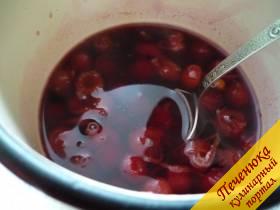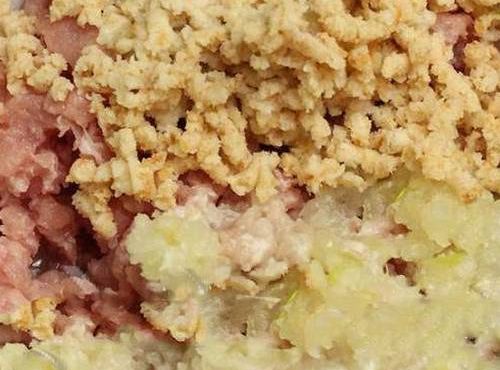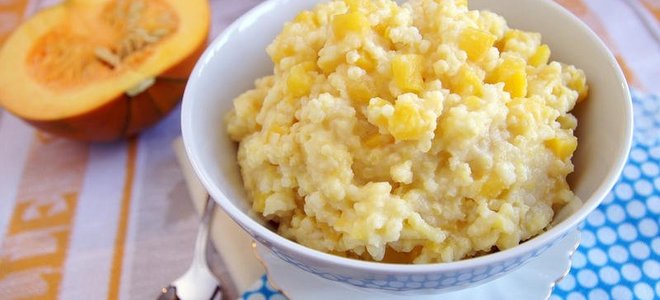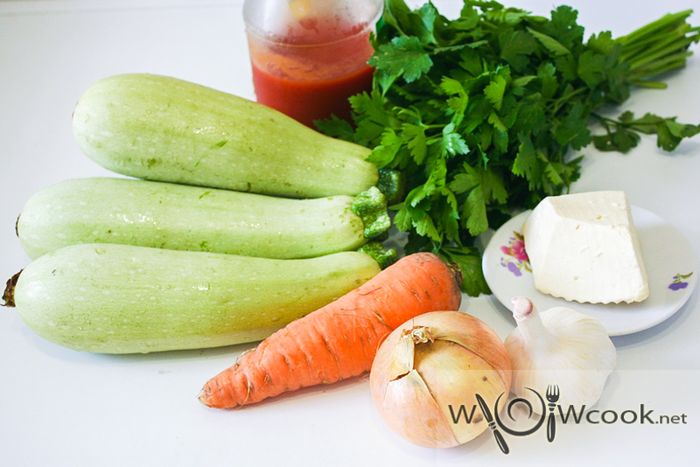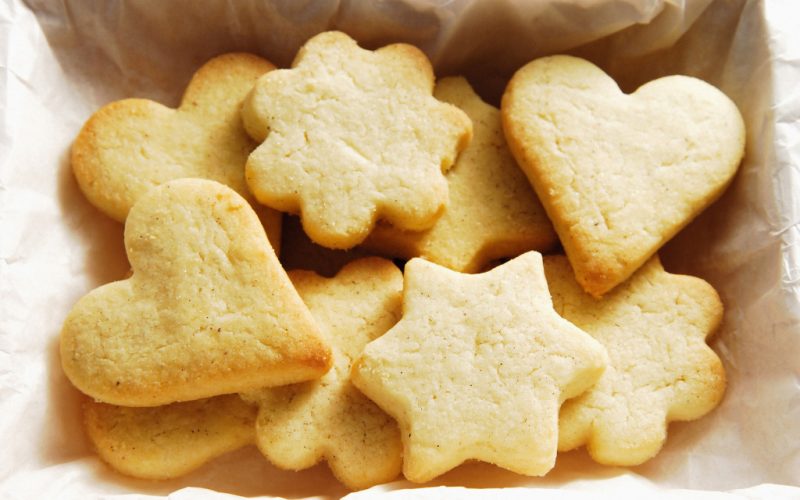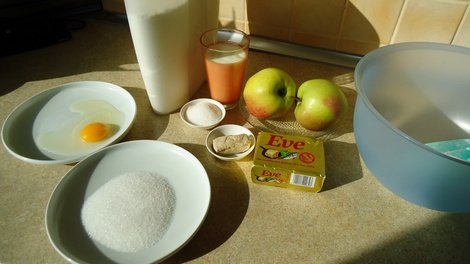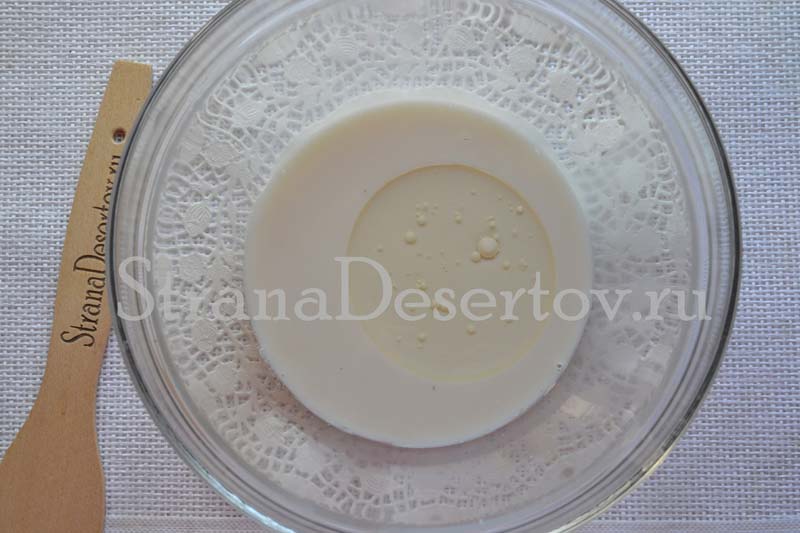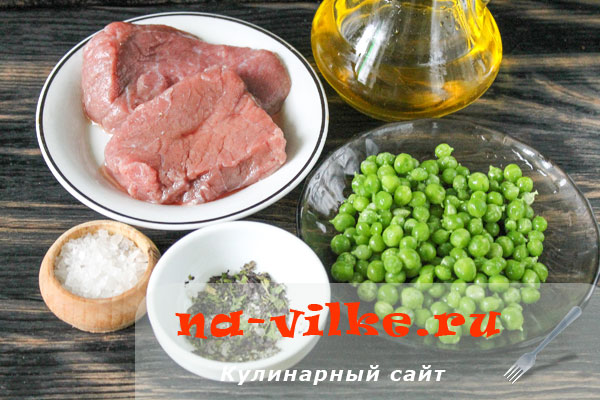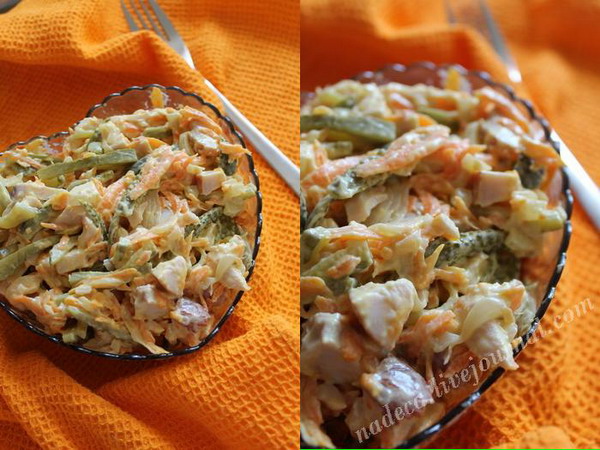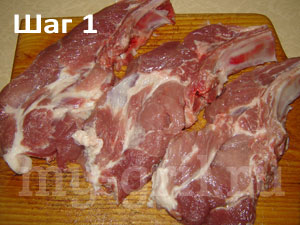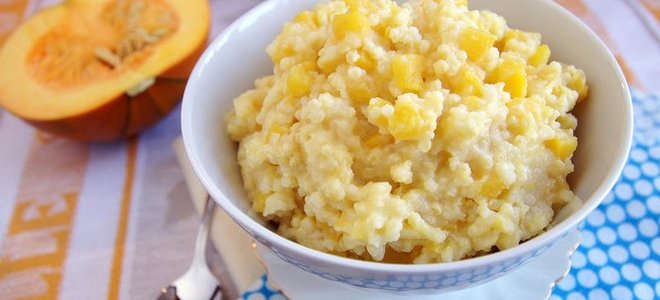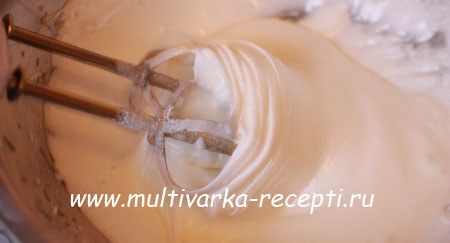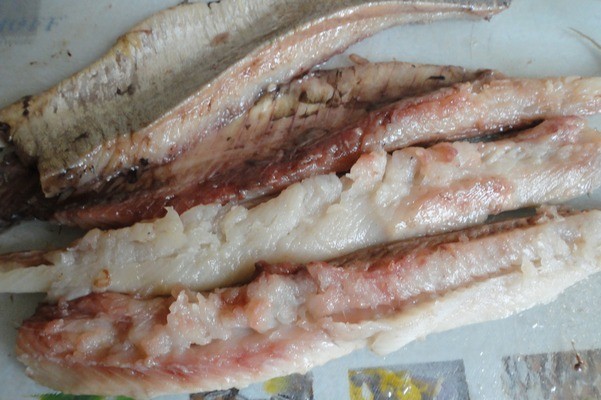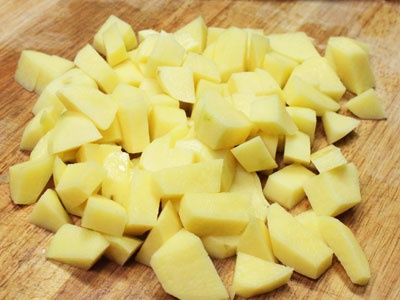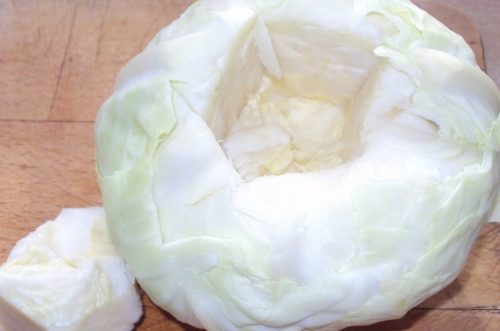Easter from the finished curd mass recipe. Easter cottage cheese custard recipe
Easter baking. However, if you want to experiment and cook something for the holiday yourself, we suggest making Easter cottage cheese. How Easter is different from Paska, and why they should not be confused with Easter cakes, we also told you - a brief educational program can be read.
We will only say that Easter is made only from cottage cheese. In the Ukrainian language it is called “siren paska”, while ordinary paska in the form of cupcakes are called simply “paska”. In the oven, curd Easter is not baked - they are either raw, or boiled, or custard.
We offer you a recipe for each of them.
Raw easter
- cottage cheese - 0.5 kg
- sour cream - 200 g
- butter - 100 g
- icing sugar - 100 g
- vanillin or vanilla sugar - a pinch
- candied fruits, dried fruits, nuts
We wipe the cottage cheese through a sieve, add powdered sugar, vanillin and soft butter to it (for this you need to first get the oil out of the refrigerator - for about two or three hours). Grind everything with a blender. Add sour cream and whisk again. When the mass will look like a thick cream, transfer it to a bowl and add candied fruits, dried fruits and nuts. Knead well.
We take the pasochnitsa and put on a flat plate. We line with wet gauze in two layers (make sure that there are no folds) and transfer the curd preparation to the inside. Gently put the edges of the gauze over the curd mass. We put a press on top - you can take a chopping board of a suitable size and put a jar of water on top. We send cottage cheese under the press to the refrigerator for at least 12 hours. We periodically look in the refrigerator and drain the liquid formed on the plate. Keep in mind that there can be a lot of serum, so you will need to drain it more than once. We turn the finished curd Easter directly in the form onto a plate, carefully remove the pasochnitsa and cheesecloth. Garnish with candied fruits, dried fruits or nuts.

Boiled Easter
- cottage cheese - 800 g
- sour cream - 1 cup
- eggs - 3 pcs.
- butter - 150 g
- 0.5 cups raisins
- sugar - 1 cup
- lemon - 1 pc.
- salt - 1/2 tsp.
- vanilla - 1 tsp
We wipe the cottage cheese through a sieve, put it in a pan. Remove the zest from the lemon, add it to the curd. We also add sour cream, eggs, melted butter, raisins, sugar, salt and vanilla. Knead well. We put on a slow fire, bring to a boil, stirring constantly. Cover the form with gauze, spread the curd mass inside. Tamp, press the load and put in the refrigerator for the night.

Custard Easter
- cottage cheese - 1 kg
- cream 10% fat - 250 ml
- eggs - 5 pcs.
- sugar - 2 cups
- butter - 250 g
- light raisins - 100 g
- walnuts - 100 g
- candied fruit - 50 g
- vanilla sugar - 1 sachet
- lemon - 1 pc.
Separate the yolks from the proteins. Beat the yolks with sugar until white. Add cream to the whipped yolk mass and bring to a boil in a water bath, stirring constantly. Make sure that the yolks with cream are not burnt. Cool the resulting custard mass. Fry nuts in a dry frying pan or dry in the oven, then peel them. We wash and dry the raisins, remove the zest from the lemon and rub it on a fine grater.
Every year, the entire Christian world celebrates the great feast of Easter. Each element of the festive table is a symbol, and the three components - colored eggs, Easter cakes and cottage cheese Easter have become traditional in Orthodox countries. Orthodoxy in modern Christianity is the guardian of the traditions of the Easter festival, both in the spiritual and in the culinary sense. The Easter table, if you look at it from a gourmet point of view, is rather poor: colored eggs, Easter cake, and a sweet curd mass. If you look at the festive table with the eyes of a person who has fasted for 40 days and has followed strict Orthodox rules of abstinence, these three dishes will be a feast. And often it turns out that, because the Easter cake made from the best components with Easter from the freshest cottage cheese and fragrant tea plunges the fasting person into culinary delight, which, however, cannot be called gluttony. This ascetic feast is the basis of the Orthodox attitude towards Easter, where it is not quantity that matters, but the quality and symbolism of food. Although Lent is over, meat and fatty dishes are still not welcome, so as not to destroy the light mood of the faithful, created during 40 fasting days.
The custom of painting eggs for Easter comes, most likely, from the legend of the preaching of Mary Magdalene. When Mary appeared in front of the emperor of Rome, Tiberius and spoke about the Resurrection of Jesus Christ, he laughed and said that he believed in it as well as in the fact that the chicken egg lying in front of him turns red. After a moment, the egg turned red. This miraculous transformation of an ordinary egg into red among believers is considered proof of divine power. In memory of this, Easter eggs are painted with eggs. According to other versions, the egg is a symbol of a new life, a wonderful transformation, and even a model of the universe.
Kulich, in essence, is bread, which symbolizes food in every sense. The festive Easter cake, of course, is far from brown bread and is a delicious cake, more like a cupcake. Often, Easter cakes are made with raisins and cottage cheese. Easter cake is made from the best products. It should be truly festive and very different from ordinary everyday food. On the Easter cakes lay out the dough or write in another way two letters - ХВ, which means Christ is Risen!
 Curd or Easter is another element of the festive table. There are versions that the curd masses, like the curd itself, are one of the oldest sacred foods associated with fertility and worship of the deities of fertility. The numerous rituals of antiquity (the spring ceremony of saluting the earth, the first plowing of the field) were carried out using cottage cheese and other dairy products, which was symbolic. Cottage cheese is more than food; this is the best that is in milk, its essence, the most nutritious and beneficial for humans. And pureed cottage cheese, and even with sugar and with the best butter, is the highest gift of nature. For a simple person in the past, such sumptuous food was available only once a year, therefore it was made for a very long time and from the best products. With the adoption of Christianity, traditions gradually changed, and the meaning of the symbol was lost in the pagan past. The main thing remained - on Easter, on the most important holiday in Christianity, treats were made with special care and love. Curd Easter was consecrated in churches and had the essence of “blessed” food.
Curd or Easter is another element of the festive table. There are versions that the curd masses, like the curd itself, are one of the oldest sacred foods associated with fertility and worship of the deities of fertility. The numerous rituals of antiquity (the spring ceremony of saluting the earth, the first plowing of the field) were carried out using cottage cheese and other dairy products, which was symbolic. Cottage cheese is more than food; this is the best that is in milk, its essence, the most nutritious and beneficial for humans. And pureed cottage cheese, and even with sugar and with the best butter, is the highest gift of nature. For a simple person in the past, such sumptuous food was available only once a year, therefore it was made for a very long time and from the best products. With the adoption of Christianity, traditions gradually changed, and the meaning of the symbol was lost in the pagan past. The main thing remained - on Easter, on the most important holiday in Christianity, treats were made with special care and love. Curd Easter was consecrated in churches and had the essence of “blessed” food.
Until the 18th century, the curd masses were loose and were not even made from cottage cheese. Rather, it was sour milk, which was collected by the whole village and fermented. Beginning in the 18th century, hard cheese, cream or butter, eggs, sour cream and sugar were used to make Easter. In addition, it was allowed to include nuts, candied fruits, raisins and spices in Easter - the most expensive overseas products. Originally Easter looked like a truncated pyramid. In addition to being a symbol of Calvary, the truncated pyramid is also the strongest ancient symbol of the pursuit of excellence. In almost all ancient cultures, there are buildings that look like a truncated pyramid. Even the legendary Egyptian pyramids originally had a truncated shape. According to many scientific, unscientific, religious and mystical theories, such a form concentrates energy, and in the Orthodox meaning - the grace of God.
 All the curd masses can be divided into two types: raw and custard, or in another way - heated. Technologically, raw pastes are quite simple: the cottage cheese is carefully rubbed through a sieve, becomes small and crumbly, then mixed with the rest of the ingredients. A distinctive feature of the method is a long and thorough grinding of cottage cheese. This part of the process is most important. The sequence of mixing the products is also important.
All the curd masses can be divided into two types: raw and custard, or in another way - heated. Technologically, raw pastes are quite simple: the cottage cheese is carefully rubbed through a sieve, becomes small and crumbly, then mixed with the rest of the ingredients. A distinctive feature of the method is a long and thorough grinding of cottage cheese. This part of the process is most important. The sequence of mixing the products is also important.
The second type of pasta is custard. In them, all products are mixed, and then cooked or simmered over low heat for about an hour. Sometimes raw foods are added to the finished mass. There is also a third type - pastry pasta. In this case, the finished mixture is baked in the oven. Confectionery pastes are not pressed, unlike raw and custard Easter.
The pressing process is mandatory only for the custard mass, the raw one can not be pressed, since in this case part of the nutrients is lost.
 Raw Easter Tips
Raw Easter Tips
1.Select the cottage cheese with the finest grain size and the least greasy. If it’s purchased, then the best option is low-fat cottage cheese.
2. Wipe the cottage cheese separately from all components.
3. Mash the cottage cheese (or pass through a large sieve). Add icing sugar, sour cream and butter, grind with these ingredients. Grind the eggs with sugar separately until they brighten. The brighter the better. Ideally, eggs with sugar should look like a thick paste of a very light shade.
4. Combine both parts, mix thoroughly, the mass should be as homogeneous as possible.
5. It is possible to add some spices (in powders).
6. Add heavily whipped cream or egg whites (or a mixture of both). Mix everything thoroughly again.
7. Add raisins, candied fruits or nuts. Shuffle the mass so that all this is evenly distributed over the entire volume (no longer need to grind).
Raw Thy Recipeserysipelas
(All masses have the same cooking technology, so only the ingredients are indicated).
Quick
600 g of cottage cheese
150 ml whipped cream
100 g sugar
beaten protein of one egg,
½ teaspoon vanillin.
Plain
800 g of cottage cheese
200 g of oil
1 tbsp. whipped cream
1 tbsp. Sahara,
½ tsp vanillin.
Simple with raisins
1 kg of cottage cheese,
200 g of oil
1.5 tbsp. whipped cream
400 g sugar
50 g of egg whites
1 tsp lemon zest (as much as possible),
100 g of raisins
50 g candied fruit.
Walnut
1.2 kg of cottage cheese,
1 tbsp. sour cream
1.5 tbsp. whipped cream
400 g of walnuts.
Full
2 kg of cottage cheese,
400 g of oil
2 tbsp. whipped cream
2 tbsp. Sahara,
3 egg yolks,
2 tsp lemon zest,
½ tsp vanilla
100 g candied fruit.
Feature: aged 2 days!
 Easter Cooking Tips
Easter Cooking Tips
1. Mix all the ingredients in the same way as the wet mass. In some (specially stipulated cases) part of the components are added at the very end - to an almost cooked mass.
2. Put the resulting mixture on the fire and cook on the smallest fire for about an hour. Do not forget to constantly stir the mass. Cooking is a long process, and it will be a shame to spoil the result with a burnt mass at the end of cooking.
3.Add extra or specially preset foods, mix thoroughly and let cool.
4. Put the remaining mass in a clean linen, not very dense napkin and place it under the press between two planks or in an Easter mold, which looks like a truncated pyramid. Under oppression, the mass should be between 12 and 48 hours.
Recipes forvarna masses
Ingredients:
1 kg of cottage cheese,
200 g butter,
300 g sour cream
2 eggs,
1 tbsp. Sahara,
1/4 tsp vanillin
Cooking:
Rub the cottage cheese, butter, sour cream and eggs. Put in a saucepan and cook over low heat, stirring continuously. In the almost finished mass, add the remaining components, mix, cool and put under oppression for a day.
Ingredients:
1.5 kg of cottage cheese,
100 g of oil
3 eggs,
1.5 tbsp. cream
200 g sugar
zest of 2-3 lemons.
Cooking:
Squeeze home-made cottage cheese under oppression for at least 6 hours. Pound with other components and set for 1 hour to heat over low heat. Continuously stir the mass and do not let it boil or burn. After an hour, set to cool on ice and put already cold under oppression for 16-22 hours.
Ingredients:
600 g of cottage cheese,
200 g butter,
400 g sour cream
4 eggs,
2 tbsp. Sahara,
0.5 tbsp. almond nuts
1 tbsp. raisins
6 tsp lemon zest
1/4 tsp vanillin.
Cooking:
Pound all products in the recommended sequence, including sugar, add almonds scalded with boiling water (peeled) with raisins. Chop nuts and raisins. Put the finished mass on the smallest fire, and do not let it boil, stir the mass for an hour. After the specified time, add the remaining components (zest and vanillin), transfer the cooking container to the ice and wait until it cools down. Place the cool mass under the press for 20-24 hours.
Curd Easter is an integral attribute of a festive table for a light Easter holiday. But this dish is not as popular and is not as common as or. It seems to me that this is due to the fact that for most housewives it seems that Easter cheese has a complicated recipe. Indeed, it is difficult to cook such a yummy.
But actually it is not so at all. There are even recipes that do not require baking. So they do not require a long stay in the kitchen. The only thing you definitely can’t do without is a pasochnitsa, a special shape in the form of a truncated trapezoid, which symbolizes the sepulcher of the Lord.
Pasochnitsy you can easily buy in the store. They can be made of wood or plastic, and inside have special recesses that form letters XB and other ornaments on Easter.
The material of the pasochnitsa does not matter, it does not affect the final form of Easter.

Let's see what interesting ways you can cook such a wonderful dish as cottage cheese Easter (paska).
A simple recipe for custard Royal Easter with raisins and dried apricots
Let's start with the most popular royal Easter recipe. Its name, as it received for the maintenance of a large number of nuts, which in the XVIII century could only allow wealthy people and similar dishes could only be found on rich royal tables.

Ingredients:
- Cottage cheese - 500 g
- Eggs - 2 pcs.
- Sugar - 100 g (to taste)
- Vanilla Sugar - 1 sachet
- Sour cream 20% - 100 g
- Butter - 100 g
- Raisins - 100 g
- Dried apricots - 80 g
- Nuts - 50 g
- Salt - a pinch
- Easter mold 20 cm high
Cooking:
1. Pour raisins and dried apricots with boiling water and leave for 20 minutes. Dried fruits should soften and soften, after which dried apricots need to be cut into small pieces.

2. Put the cottage cheese in a small pan (which can then be put on fire) and interrupt with a blender or simply pass through a meat grinder to get a soft plastic mass.
Curd is better to take an average fat content of 2-3%, and not wet

3. Add the eggs, sugar, sour cream and butter to the curd and mix together until a homogeneous consistency.

4. Put the pan on a small fire and bring the cottage cheese to a boil. But to really boil it is by no means necessary. Just wait for the first bubbles and remove the pan from the heat.
The cottage cheese will soften as it warms up and by the time it is ready, it will resemble sour cream in consistency.
Ready cottage cheese should be placed directly in a saucepan in a deep bowl with cold water and beat with a whisk until it cools to room temperature. Then add dried fruits and nuts and mix again.

5. Take the pasochnitsa, put it on a flat plate with a narrow top and spread it with one or two layers of gauze.

6. Fill the form with the curd mass, cover the edges of the gauze. Then we put a saucer on the base of the future pyramid, and on top we put a liter jar of water so that it acts as a press.

7. We put the whole structure in the refrigerator for the night, so that the glass is excess liquid.
It is necessary to keep Easter under pressure from 8 hours to 2 days
Then we take out Easter from the refrigerator, turn it over and carefully remove the form, after which we also carefully remove the gauze. You can decorate Easter with pastry topping, chopped nuts or chocolate chips.

How to cook curd Easter without eggs with gelatin and poppy seed filling
If you do not run the risk of contacting incompletely heat-treated eggs, you can exclude them from the recipe, but prepare an equally tasty sweet.

Ingredients:
- Easter mold
- Cottage cheese - 700 g
- Sugar - 300 g
- Walnuts - 50 g
- Raisins - 50 g
- Poppy - 100 g
- Cream - 100 g
- Milk - 250 ml
- Gelatin - 1 tbsp
- Vanilla Sugar - 10 g
- Water - 1/2 cup

Cooking:
1. Pour gelatin into a small bowl and pour a little water at room temperature to it. Water needs literally a couple of fingers thick. Stir and leave to swell for 15 minutes.

After it swells, put the bowl in a pan with a small amount of water (so that it does not reach the middle of the bowl). We send the pan to a small fire and wait until the gelatin is completely dissolved. Then immediately remove the pan from the stove.

2. In a separate deep bowl, mix the cream with vanilla sugar and half the cooked regular sugar. Pour the gelatin there and start portioning the cottage cheese, interrupting it with a blender.

3. Go to the poppy seed filling. Mack must first be chopped with a blender or in a coffee grinder. For further cooking we need a saucepan. We pour crushed poppy into it, pour milk and fill in the remaining sugar. Mix everything and set it for 15 minutes on a small fire. Stir occasionally.
During this time, the milk will completely evaporate and only the sweet sticky poppy mass will remain in the pan.

4. We transfer it to a plate and, until it has cooled, add raisins washed in boiling water and dried with a towel.
Raisins do not need to be pre-soaked, the point is that it absorbs all the moisture left in the poppy and the filling will get the correct consistency

5. Dry the nuts on a baking sheet in the oven and chop with a knife and mix with poppy seeds.

6. Take the pasochnitsa and place it with a narrow top on a flat plate. We lay out the walls of the pasochnitsa with doubled wet gauze.
After lining, a sufficient amount of gauze should still hang from the pasochnitsa so that it can completely cover the base of the pasochnitsa

7. Put the curd in the pasochnitsa so as to fill it in half. Then we put a layer a couple of centimeters thick on the inner walls so that the center of the pasochnitsa remains empty. There we will put poppy seed filling.

8. We fill the resulting cavity with the filling. We do this carefully so as not to damage the curd edges.

9. We seal the pasochnitsa with the remains of cottage cheese and cover the base with gauze. Then we put on the base a saucer, and on top - a liter jar of water. And under such oppression we leave Easter in the refrigerator for the night, so that the cottage cheese is compressed, and all the excess liquid flows out.

10. The next day, we take out the pasochnitsa, carefully open it and remove the cheesecloth.
You need to do this very carefully, do not forget that Easter is stuffed and it is not as dense as usual

Video on how to cook a classic Easter with candied fruits from Julia Vysotskaya
Fans of Julia Vysotskaya found her video on how to cook curd Easter on cream with candied fruit. The video, as always, is very interesting and informative.
Cottage cheese caramel Easter without baking with boiled condensed milk
If you want to diversify the festive table, then you can cook a wonderful caramel Easter. Caramel flavor is given using regular boiled condensed milk. So the recipe doesn't get any harder.

Ingredients:
- Butter - 100 g
- Cottage cheese - 300 g
- Sour cream - 100 g
- Boiled condensed milk - 200 g
- Dried apricots - 40 g
- Walnut - 40 g
- 0.5 L Cookies
Cooking:
1. We put the butter, cottage cheese, sour cream and condensed milk in one bowl and turn everything into a homogeneous mass using a blender.

2. Dried apricots in boiling water for 10 minutes, then dried with a paper towel and cut into small pieces.
Walnuts are dried in the oven and also chopped.
The crushed ingredients are added to the curd mass. Mix well.

3. Put the pasque with the narrow top on a flat plate and line its walls with wet gauze folded in two layers.
We try so that the gauze does not form folds on the walls that are printed on the curd

4. We close the base of the paska with gauze and set a jar of water or other suitable utensils that can put pressure on the cottage cheese without touching the walls of the paska. This design must be left in the refrigerator for 12 hours.

Do not forget to periodically check Easter and drain the liquid from the lower plate so that it does not soak back into the curd
5. After that, we turn over Easter, remove the form and carefully remove the gauze.

A step-by-step recipe for Easter baking with semolina in the oven
You can bake curd sweetness. Of course, you won’t put the pasochnitsa in the oven (if it is plastic), so we will cook in standard cylindrical forms.

Ingredients:
- Curd% - 1 kg
- 6 proteins
- 6 yolks
- Sour cream - 1 cup (250 ml)
- High fat cream - 100 ml
- Manka - 1 tablespoon
- Starch - 1 tbsp
- Baking powder - 1 tsp
- Lemon juice - 1 tbsp
- Dried Fruits - 100 g
- Sugar - 180 g
- Vanilla sugar, ground nutmeg, cardamom, cinnamon - optional

Cooking:
1. First of all, you need to grind the cottage cheese through a sieve or beat with a blender, and combine the yolks with half the prepared sugar and beat with a mixer until the mixture becomes white and homogeneous.
After that, add the egg mass to the curd and mix well.

2. Add sour cream with cream, sifted semolina, baking powder and starch to the curd mass. We also send lemon juice, a couple of bags of vanillin and, if desired, half a teaspoon of nutmeg and cardamom. Mix.
In the resulting mixture we put cinnamon and dried fruits and mix well again.

3. We take the cooled proteins, add the remaining sugar and a pinch of salt to them and beat with a mixer at high speed for 10-15 minutes until stable white peaks appear.

4. Put whipped proteins in the curd mass and mix gently with a spoon.
We put aside a third of whipped proteins and put them in the refrigerator - with this part we will decorate the finished Easter

5. We take cylindrical baking dishes, line the bottom and walls of the forms with parchment paper and fill them with curd mass at 3/4 height. We cover the forms with foil, put them on a baking sheet with high walls and pour in the baking sheet of ordinary water at half its height.

6. Put the baking sheet in the oven, preheated to 180 degrees for 50 minutes, then remove the foil and hold Easter for another 20 minutes.
Then turn off the oven and leave the pan in it for another 20 minutes.
But that's not all. Having taken the mold out of the oven, Easter cannot be taken out for another 30 minutes until they have completely cooled down. The curd mass is heavy and it can settle if you get it too soon

7. When the curd desserts have completely cooled, we decorate them with the protein glaze set aside earlier.

As you can see, all the recipes are very different and I hope that you liked one of them.
I would like to think that I dispelled your fears regarding the preparation of such a wonderful festive dish as cottage cheese Easter.
And that's all for today, thank you for your attention.
Curd Easter - cooking recipes.
Curd Easter is traditionally made in the form of a tetrahedral pyramid that represents Golgotha. Therefore, in pre-revolutionary times, every family had a pasochnitsa - a folding wooden form of four planks. Now it is hardly possible to find those old pasochnitsy, but they began to be released again in connection with the growing demand. Please note that the letters “ХВ” (Christ is risen) were cut out on the inside, as well as traditional images: a cross, a spear, a cane, sprouted grains, sprouts and flowers - symbols of the suffering and resurrection of Christ. All this is imprinted on Easter and gives it a solemn, festive look.
Easter can be raw, boiled and custard. Although they are similar in composition and taste, they are made differently. Raw Easter is easier to cook, but boiled and custard are stored for longer (a week in the refrigerator), in addition, raisins can be added to them, from which raw Easter will quickly turn sour.
It is very important to choose cottage cheese for Easter - it should be fresh, dry and uniform. For the curd mass to be airy, the curd must be held under oppression so that the glass is excess moisture, and then wiped through a sieve (preferably twice). Do not skip the curd through a meat grinder - it turns out crushed and viscous.
Spices - cardamom and star anise will give a special aroma to Easter. In addition to candied fruits and walnuts, you can also use raisins and almonds.
Church curd Easter.

There are many recipes for making Easter, but do you know how to prepare a real Easter church? We offer you a recipe from the church cookbook, according to which you can cook a real Easter, juicy and rich, in compliance with all traditions.
Real Easter Church is prepared from the following ingredients:
2 kg of cottage cheese
10 eggs
400 g butter
700 g sugar
400 g sour cream
100 g almonds
100 g pitted raisins
vanillin - to taste.
Church Easter is prepared as follows:
1. Wipe the cottage cheese with butter through a sieve, add eggs, sour cream and mix thoroughly in a large bowl.
2. Put a bowl of Easter on medium heat and bring the mass to a boil, continuously stirring it with a wooden spatula so as not to burn.
3. Once the mass has reached a boil, immediately remove it from the heat and refrigerate as quickly as possible, continuing to stir continuously.
4. Add sugar, vanillin, raisins and almonds to the cooled mass, mix well, put in a pasochnitsa, tamping the mass tightly, put a saucer with cargo on top and put in the refrigerator for a day.
Bon appetit and happy Easter!
Author Olga Ryvkina
Easter recipe for cottage cheese custard.

Curd Easter - a traditional dish on the table on the day of the celebration of Easter. A real treat, which is loved by both children and adults, is not difficult to prepare.
To cook Easter custard you need:
Fat cottage cheese, 1kg
- butter, 200 gr
- eggs, 5 pcs
- sugar, 200 gr
- vanilla sugar, a teaspoon
- cream 10-20%, 400 ml
- nuts, candied fruits, raisins, 100 g each
From the products mentioned above, you can make 2 Easter of medium size (about 12 cm in diameter).
The way to cook Easter custard:
Cottage cheese must be passed through a meat grinder or through a fine sieve so that it becomes homogeneous.
Heat the oil a little until soft (do not drown!), Add to the curd.
Beat eggs with sugar and vanilla sugar separately, add cream, stir everything until smooth, put on a light fire. The mixture, stirring constantly, bring to a boil - the mass should slightly thicken.
The egg mixture remains to cool, at this time we mix the cottage cheese and butter portion with candied fruit, raisins and nuts. Of course, all dried fruits must first be washed and dried, finely chopped if necessary.
Then all the components are mixed, Easter is laid out in a special form for Easter, in which there are holes for the outflow of excess fluid, pre-lined with gauze (you can use a colander). Gauze should be folded in several layers, the edges must certainly hang from the edges of the dishes. When Easter is laid, the edges of the cheesecloth are wrapped, the form is placed in a container, large in size - you need to install the load on top, and from Easter the whey will drain.
The mold in the dishes, together with the cargo, is sent to the cold for 12 hours. After this time, the gauze unfolds, the form turns over, Easter is removed from it on a plate. You can decorate the dish with candied fruits and nuts.
Author Tamara Chumakova
Custard Easter “Tender curd”.

Custard Easter “Tender curd” is prepared from the following ingredients:
Market curd - 500 g
egg yolks - 2 pcs.
sugar - 0.5 tbsp.
milk - 2.5 tbsp.
butter - 100 g
vanilla sugar - 1 tsp
candied fruit - 100 g
chopped walnuts - 2 tablespoons
How to cook a tender custard Easter:
1. Squeeze the cottage cheese through two layers of gauze, then rub through a sieve.
2. Pound the yolks with sugar, pour in the milk. Put the mixture in a water bath and warm, stirring, until thickened (without bringing to a boil).
3. Pour the hot mixture into a large bowl, add the butter, mix. Add vanilla sugar, candied fruit and walnuts. Shuffle again.
4. Add the cottage cheese to the mixture in small portions, each time thoroughly mixing.
5. Fold the mass in a gauze bag and hang for 10-12 hours.
6. Then transfer the curd mass to the pasochnitsa, give it the desired shape and decorate.
Raw Easter recipe in the old way.

For all Christians, Easter is a great holiday, but the Orthodox are especially fond and revered. The onset of Easter marks the end of Lent, so for the Easter table it is customary to cook a large number of a wide variety of dishes.
However, Easter has the main attribute - it is a curd Easter or Easter cake and colored eggs. In former times it was difficult to imagine a festive Easter table in an Orthodox family without a cottage cheese Easter, sometimes even several kinds. The main component of this dish is mashed cottage cheese, which is mixed with butter, sour cream or cream, eggs and sugar, and vanilla (vanilla sugar) is added for the aroma.
The old-fashioned raw Easter recipe requires high-quality products: cottage cheese is only fresh, not sour, it must be kept under oppression so that the glass has excess serum; butter should be unsalted, soft and plastic; sour cream and cream are taken at 30% fat, and granulated sugar is fine and white.
The old raw Easter recipe also requires that the curd be thoroughly rubbed through a sieve to avoid grains in Easter. Butter should be softened at room temperature, for which it needs to be taken out of the refrigerator 1.5-2 hours before cooking Easter. Never dissolve oil when heated.
Raisins, candied fruits and dried apricots, which are usually added to the curd Easter, must be thoroughly washed and dried. Sometimes cardamom and star anise are also added to the aroma, which must be ground very finely.
To cook raw Easter in the old way, you will need:
Cottage cheese - 800 g
egg yolks - 4 pcs.
fat cream - 1.5 tbsp.
sugar - 150-200 g
butter - 200 g
salt - a quarter teaspoon
vanillin
raisins, chopped candied fruits and dried apricots - 1 tbsp.
Raw Easter is prepared in the old way:
1. Wipe the cottage cheese thoroughly through a sieve.
2. Whip the cream with half the sugar.
3. Whip the softened butter with the remaining sugar, yolks, vanilla and salt.
4. Thoroughly mix the cottage cheese with the oil mixture, adding raisins, candied fruit and dried apricots (optional).
5. When the consistency of the mass becomes uniform, add the cream and mix again.
6. Cover the Easter mold (pasochnitsa) with a little damp gauze, put the curd mass, covering it with the top of the cloth, put the load on top and refrigerate for 6-8 hours.
7. Free the finished Easter and decorate as desired.
Curd Easter with semolina.

It is difficult to imagine an Easter holiday without a traditional Easter cake on the table. Over the years, many recipes have emerged that have turned it from plain bread with raisins to a delicious muffin or casserole. Curd Easter with semolina is prepared very simply and quickly, but even the most capricious gourmets will appreciate its taste. The cottage cheese contained in it makes it not only very tasty, but also healthy.
Curd Easter with semolina is prepared from the following products:
Soft cottage cheese - 600 g
semolina - 10 tablespoons
eggs - 4 pcs.
butter - 100-150g
lemon - ½ pcs.
vanillin or vanilla sugar - to taste
sugar - ½ tbsp, but more can be
salt to taste
soda - ½ tsp or a little less
Curd Easter with semolina is prepared as follows:
1. Rub the cottage cheese.
2. Separate the whites from the yolks. Beat the whites separately with a pinch of salt.
3. Beat the yolks, cottage cheese, sugar and vanilla sugar or vanilla, slowly add the flooded butter, whisking the mixture. After that, add the proteins, continuing to whisk. If the dough turned out to be too liquid, then add semolina, if too thick - milk.
4. Pour the finished dough into the prepared molds. They can be greased with oil, but it is better to use parchment paper - it will be easier to pull out, and the calorie content of the dish will not increase.
5. In a preheated oven, bake at a temperature of 180-200 degrees for about 50 minutes. 10 minutes before the end of baking, reduce the temperature in the oven to 160 degrees.
Curd Easter with semolina is quite soft and crumbly. It can be served as a traditional Easter cake, covered with fondant from beaten eggs with powdered sugar. Fudge can be different, its choice depends on the desired result. We offer you some simple recipes that will help make the Easter cake beautiful and festive.
If you want the fudge to be soft, not harden, and not break when cutting Easter, beat the whole egg with sugar until the sugar is completely dissolved.
The hardening white fudge can be prepared from egg whites (1 pc.), Powdered sugar (50 g) and lemon juice (1 tablespoon). First you need to beat the proteins, and then gradually add the powdered sugar and lemon juice. In order for the fondant to lie evenly and quickly solidify, you need to apply it on the still warm Easter.
You can replace the fondant with white glaze, for the preparation of which you will need 100 ml of milk, 100 g of sugar, 1 tsp. cognac (liquor). All ingredients are dismounted and cooked over low heat until the mixture begins to resemble syrup. After applying to the Easter cake, the syrup freezes, turning into icing.
We hope that our recipe will decorate your table and give pleasure to you and your loved ones. In addition, the curd Easter does not harm the figure, since its calorie content is only 177 kcal per 100 g.
Easter cottage cheese royal.

Almost every housewife has her favorite Easter recipe. There are many varieties of them: royal, pink, chocolate, nut, easter with raisins and so on. All variety and not list. The main ingredient of this Easter is cottage cheese. Easter cakes are sometimes called Easter cakes, but this is not true.
It is better to cook the cottage cheese yourself, then Easter will be tastier. Homemade cottage cheese can be prepared from milk purchased in a store. You can cook the cottage cheese in various ways, but the main thing is that it turns out not very acidic, dry, and at the same time be without grains. In addition to cottage cheese, sour cream, eggs, butter and sugar are put in Easter. Products must be necessarily the freshest, sour cream - thick and oily. Additional ingredients may include raisins, candied fruits, nuts, dried apricots, prunes, lemon zest, cardamom, vanilla, cocoa, cinnamon.
To cook the royal cottage cheese Easter, you will need:
Cottage cheese - 1 kg
eggs - 7 pcs.
sour cream - 400 g
sugar - 250 g
vanillin - 1 packet
butter - 200 g
raisins - 150 g
almonds - 100 g
dried apricots - 100 g
hazelnuts - 100 g
How to cook Easter royal cottage cheese:
1. Take cottage cheese soft, without lumps, wipe through a sieve twice.
2. Add sour cream, softened butter, sugar and vanillin to the cottage cheese. Mix everything.
3. We put the pan with the curd mass on the fire and constantly interfere until it becomes uniform and begins to puff.
4. Then add the eggs to the curd mass - one at a time, each time mixing the mass well.
5. Wash dried apricots and raisins and pour boiling water for 15-20 minutes. Then dry. Add to the curd mass, mix.
6. Hazelnuts and almonds lightly fry and chop. Add to the curd mass, mix.
7. We take a sieve (or a pasochnitsa or other form for Easter), cover it with two layers of gauze and pour out our curd mass. We wrap the edges of the gauze crosswise and put under oppression, then in the cold for a day, at least.
Royal Curd Easter.

To cook a royal curd Easter, you will need:
Cottage cheese - 500 g
chicken eggs - 2-3 pcs.
sour cream - 200-250 g
icing sugar - 70-100 g
butter - 100 g
candied fruit - to taste
almonds to taste
raisins to taste
How to cook royal curd Easter:
1. So, we begin by wiping the cottage cheese through a sieve, or by passing it through a meat grinder twice. Then we put on a slow fire a thick-walled pan and melt butter in it. As soon as it becomes soft, add the cottage cheese to the saucepan and stir the mass vigorously until it becomes more liquid. After that we add sour cream to the curd mass and once again we thoroughly mix it.
Once again we draw your attention to the fact that the fire should be minimal.
2. Already in the last turn we begin to gradually add (one at a time) chicken eggs. Again, mix the mass well until a uniform consistency is formed.
We continue to “cook” the curd mass over low heat, without leaving the stove and constantly stirring the mass so that it does not burn.
3. As soon as the mass begins to boil, remove the pan from the fire and put it on ice or in very cold water. Stir the mass until it cools completely. After that, add icing sugar and vanilla sugar to it. Thoroughly mix everything again and let stand for about 10 minutes.
4. At this time, prepare the mold for Easter: moisten it with plain water, and then cover it with a cotton towel or gauze (the edges of the gauze must be bent). We spread the prepared curd mass into the mold and cover it with gauze. We put Easter in a cold place under oppression for at least 12 hours (therefore, it is best to do all the above preparations in the evening to leave the little one for the night). At the same time, do not forget to substitute a plate for Easter so that the serum flows into it.
5. Carefully remove the finished Easter from the tin, bend the edges of the gauze and spread the Easter on a beautiful large dish. From above, carefully decorate the curd Easter with candied fruits, marmalade and raisins. You can also use whole kernels of nuts (almonds, walnuts, etc.).
Easter cottage cheese baked.

To cook Easter baked curd, we need:
Cottage cheese - 600 g
starch - 40 g
eggs - 6 pcs.
sugar - 7 tbsp
chocolate - 100 g
raisins - 25 g
candied fruits - 25 g
almonds - 10 g
vegetable oil - 1 tsp
bread crumbs - 1 tablespoon
How to cook Easter cottage cheese baked:
1. Prepare the cottage cheese. For cooking, you need to take fresh, greasy, crumbly cottage cheese. We put it in gauze, tie it, put it in a colander and put the load on top. We substitute a plate under the bottom where the liquid will drain. Leave in this state for 12 hours, then excess liquid will leave the cottage cheese.
2. Soak the raisins in a glass of warm water.
3. We rub the prepared cottage cheese through a sieve, as a result we get an air mass.
4. Pour the water from the raisins and mix with starch.
5. Add raisins with starch to the curd, mix everything thoroughly.
6. Separate the yolks from the proteins, add 4 tbsp to the yolks sugar and mix with a whisk.
7. Add the resulting yolk mass to the curd, mix.
8. Mix the proteins and the remaining sugar. We will beat the mixture until a stable foam, I beat for about 10 minutes.
9. Gently add the proteins to the cottage cheese.
10. Lubricate the baking dish with vegetable oil. Sprinkle it with breadcrumbs.
11. Heat the oven to 180 ° C.
12. Put the curd into a mold and bake for 1 hour at a temperature of 180 ° C.
13. We take out the finished Easter, cover it with a towel, let it cool.
14. Carefully remove the Easter from the mold.
15. We will prepare our decoration: in a water bath melt the chocolate, add a spoonful of water there.
16. Pour Easter cake with melted chocolate on top, put almond leaves and candied fruit.
Our Easter baked curd is ready.
Tip: You can add candied fruit directly to Easter, and leave only chocolate and almond leaves on the decoration.
Author Julia Golubko
Raw Curd Easter Recipe.

This delicious cottage cheese raw Easter recipe is distinguished by the fact that you don’t need to cook anything special - with minimal time you will get an excellent holiday dish.
For the preparation of Easter curd raw you will need:
Cottage cheese, 500 grams
- butter, 200 grams
- granulated sugar, 200 grams
- cream, 100 ml
- egg yolks, 2-3 pcs
- almonds, raisins, candied fruits, 1 tbsp. spoon
- cardamom, vanillin, to taste
The way to cook Easter curd raw:
1) Butter should be softened (do not drown!), Thoroughly grind with sugar.
2) In the mass gradually, one at a time, add the yolks. Grind the mixture before all sugar grains disappear.
3) Add cardamom, vanillin, favorite spices - to taste.
4) Rub the cottage cheese a couple of times through a sieve, so that it becomes smooth, without lumps, mix with the egg-butter portion.
5) Gently mixing, add candied fruits, nuts, raisins.
6) Beat the cream, carefully introduce into the rest of the mixture, after which we transfer the raw cottage cheese to the mold, put the oppression on top, and send it overnight in the cold.
This recipe for making Easter curd raw is simple, however, the dish turns out to be tasty - it's a classic.
Curd Easter with chocolate.

Thanks to chocolate, this recipe will certainly please your children, especially the sweet tooth.
To cook a curd Easter with chocolate, you will need:
Sour cream - 800 g
chocolate - 200 g
eggs - 6 pcs.
sugar - 350 g
cream - 100 ml
butter - 400 g
cottage cheese - 200 g
vanilla sugar - 5 g
almonds - 70 g
lemon juice - 1 tablespoon
icing sugar - 300 g
This number of products is designed for 16-18 servings, if you plan to make fewer servings, then reduce the number of products, while maintaining all the proportions.
Curd Easter with chocolate is prepared as follows:
1. Spread the sour cream on cheesecloth, twist and hang for several hours - this is necessary so that the glass has excess fluid. While the whey flows, we divide the eggs into yolks and proteins.
2. Three sha fine chocolate graters, beat the yolks with sugar, vanilla and chocolate, add cream. The resulting mixture is put in a water bath, stirring, let it boil, and then cool.
3. Cut the butter into small pieces and let stand at room temperature for 10-15 minutes to make it soft. After that, mix it with the settled sour cream, egg and cream mixture and beat.
4. Finely chop the almonds (can be chopped in a blender), wipe the cottage cheese until smooth, mix all the ingredients, whisk with a mixer.
5. Prepare forms for Easter, line them with gauze in several layers. Put the resulting mass into the molds, cover with gauze ends, put the load on top and refrigerate. Easter will be ready in 24 hours.
6. Cooking the icing: beat the whites with powdered sugar and lemon juice to make a thick white foam. We cover Easter with this glaze, sprinkle with grated chocolate, let it harden. Easter is ready!
Easter prepared in this way looks very beautiful and elegant, but you can turn on your imagination and make it even more vivid. For decoration, you can use fruits or dried fruits, caramel and lemon zest, in a word - everything your heart tells you. Put your soul in a curd Easter with chocolate, then it will bring a lot of joy to you and your loved ones.
Curd Easter with condensed milk.
To cook Easter cottage cheese with condensed milk, we need:
Cottage cheese - 800 g
sour cream (42%) - 200 g
raisins - 150 g
condensed milk - 380 g
vanilla sugar - 1 tsp
How to cook Easter cottage cheese with condensed milk:
1. Soak the raisins in a glass of warm water, leave for half an hour.
2. Rub the cottage cheese through a sieve (twice), you can also use a meat grinder. Cottage cheese will become lush and airy.
3. Add sour cream to the curd and mix everything thoroughly with a blender.
4. Add the condensed milk and vanilla sugar. I added 1 g of vanillin instead of vanilla sugar, since it was not found at home.
5. Beat the mixture until a homogeneous consistency. We’ll try, maybe you like more, then add some more sugar and mix.
6. Pour the water from the raisins, dry it a little.
7. Add raisins to the curd mixture and mix.
8. Put the pasochnitsa on a plate so that whey from cottage cheese flows down.
9. Lay out the pasochnitsa with wet gauze, folded in several layers.
10. Transfer the curd mixture to the pasochnitsa, flatten it and gently squeeze it, then gently fold the edges of the gauze.
11. Put the load on top, I put a small closed can of water.
12. Put everything in the refrigerator for 12 hours.
13. We get it, remove the cheesecloth from above and gently turn it over on a dry plate, remove the cheesecloth from Easter.
Easter cottage cheese with condensed milk is ready. You can decorate it according to your desire, I used the usual sugar powder, which is sold in all stores.
Tip: Instead of regular condensed milk, you can take boiled condensed milk, it will also result in a beautiful Easter, but with a slightly different taste!
Curd Easter without eggs.

Curd Easter without eggs is an unusually delicious and sophisticated type of Easter. It is light, fast and easy to prepare, the only catch is that you need to prepare such an Easter in advance, because it must always stand under oppression for at least a day. This dessert will appeal to both children and adults, in addition, it is very useful.
A few tips for cooking delicious cottage cheese Easter:
Cottage cheese should be taken dry for Easter, it is best to put it in cheesecloth for the night and hang it so that the glass has excess liquid, then Easter will turn out to be dense and better set;
the cottage cheese should be wiped through a sieve during the preparation of Easter at least twice;
it is better to use not sugar, but powdered sugar for Easter, then Easter will be more tender;
it is better to take fat sour cream for Easter;
if you don’t have a special pasochnitsa, you can take another plastic form or plastic bucket and make an ordinary awl in the bottom of the hole for draining the liquid;
in Easter, you can put additional components - dried fruits (dried apricots, raisins, prunes, candied fruits), nuts. They will make Easter not only tasty, but even more healthy;
Easter should be allowed to stand in the cold under oppression for at least 12 hours, so that it becomes dense and holds its shape well.
To cook a curd Easter without eggs, you will need:
Cottage cheese - 650 g
icing sugar - 250 g
sour cream - 200 g
butter - 250 g
vanillin
raisins - 80 g
dried apricots - 80 g
prunes - 80 g
How to cook curd Easter without eggs:
1. We twist the cottage cheese through a meat grinder, and it is better to wipe it through a sieve (2 times), because after a meat grinder it can become wrinkled, crushed and viscous. And the curd wiped through a sieve will be lush, airy and saturated with air. Then add the softened butter, mix.
2. Wash dried apricots, raisins and prunes and pour boiling water for about 15-20 minutes. Then cut into pieces dried apricots and prunes.
3. Mix vanilla with icing sugar and add to the curd mass.
4. Add sour cream and mix in a blender.
5. Add dried apricots, prunes and raisins, mix again.
6. Prepare the pasochnitsa (if it is not there, you can use a sieve, colander). We cover the Easter mold with gauze in 2 layers and put in a container (you can in a plastic bowl).
7. We spread the curd mass in the pasochnitsa, we press well. The ends of the gauze on top wrap crosswise and put the load. If you use a different shape, place a deep plate underneath to allow liquid to drain. We put Easter in the refrigerator for 10-15 hours.
8. Easter is ready!
Easter cottage cheese puff.

I propose to prepare for Easter the original Easter cottage cheese of three layers, consisting of curds and additives - raisins are mixed in the first layer, cocoa powder in the second, walnut in the third. It turns out very beautiful, and most importantly - delicious!
To cook Easter puff curd, you will need:
Homemade cottage cheese - 1 kg
eggs - 3 pcs.
butter - 200 g
gelatin - 40 g
milk - 2 tbsp.
sugar - 1.5 tbsp.
cocoa powder - 3 tbsp.
nuts - 3-4 tablespoons
raisins - 3-4 tablespoons
vanillin - to taste
How to cook Easter puff curd:
1. Soak gelatin in ½ cup cold water, leave for 30-40 minutes to swell.
2. We heat the milk and breed gelatin in it.
3. Beat eggs with a little sugar.
4. We take home-made cottage cheese, choose more buttery and fatter. Wipe through a sieve, rub with sugar and softened (not on fire!) Butter. Add the eggs. Mix well and beat with a mixer.
5. We continue to whip the cottage cheese and at the same time pour the milk with gelatin. Beat until smooth, lush mass.
6. Pour raisins with boiling water.
7. We chop nuts.
8. The whipped curd mass is divided into 3 parts. Add steamed raisins in one part, chopped nuts in the second, and cocoa powder in the third.
9. We grease the mold for Easter with butter. We spread the curd mass in layers: first - the curd mass with raisins. We place the form in the refrigerator for solidification, for 40-50 minutes. Then - a mass of cocoa, again placed in the refrigerator for solidification. And the top layer is a mass with nuts. We place in the refrigerator for solidification for about 2-3 hours.
10. We take out the frozen curd Easter from the mold by dipping the mold in hot water and quickly turning it on a plate.
11. We decorate Easter with candied fruits, raisins and nuts.
Preparation time: 30-40 minutes
Cooking time: 40-50 minutes
Hardening time: 2-3 hours
Servings Per Container: 6-8
Curd Easter with pieces of chocolate.

To cook a curd Easter with pieces of chocolate, we need:
Cottage cheese - 400 g
eggs - 2 pcs.
butter - 180 g
sugar - 100 g
dark chocolate - 50 g
cream (30%) - 100 ml
cinnamon - 1 tsp
cocoa - 2 tsp
How to cook curd Easter with pieces of chocolate:
1. Boil the eggs. Separate the whites from the yolks. For curd Easter, we need only yolks.
2. Mix the yolks, melted butter and sugar in a separate bowl. Carefully grind.
3. Add cottage cheese and cinnamon to the mixture. Mix with a blender.
4. Cut the chocolate into small pieces.
5. Put the chocolate in the curd mass and mix gently.
6. We line the pasochnitsa with wet gauze or muslin.
7. Put the curd in the form, cover it with gauze.
8. Put on top a small load and put in the refrigerator for at least 4 hours (I left Easter in the refrigerator for the whole night). Do not forget to put a deep plate of a larger diameter under the bottom of the form so that liquid drains there. It is desirable that the resulting serum does not come in contact with the curd Easter. It is better to periodically check and drain the serum.
9. We take out the finished Easter from the pasochnitsa, carefully remove the cheesecloth.
10. Sprinkle Easter cocoa powder with a sieve.
It turned out to be a curd Easter with pieces of chocolate and chocolate sprinkles. Very bright and unusual taste that will appeal to both children and adults.
Easter recipe for cheese with boiled yolks.

To prepare Easter cottage cheese with boiled yolks you will need:
Fresh cottage cheese, 600 grams
- butter, 200 grams
- icing sugar, half a glass
- cream, 400 ml
- boiled yolks, 7 pieces
- vanillin or other spices to taste
The way to cook Easter curd with boiled yolks
Cottage cheese, as in many other Easter recipes, should be wiped through a sieve so that it becomes smooth, without lumps. Mix the cottage cheese with butter and yolks.
Beat cream with powdered sugar, add them to the curd mass. Mix everything thoroughly, put our Easter cottage cheese with boiled yolks in the form, put oppression, send it to the cold for 12 hours.
Easter cottage cheese-sour cream with boiled condensed milk

To cook Easter cottage cheese and sour cream with boiled condensed milk, you will need:
Cottage cheese - 500 g
sour cream 20% - 500 g
condensed milk - 400 g
butter - 150 g
lemon - ½ pcs.
dried fruits and candied fruits - 1 tbsp.
sugar - 7 tsp
How to cook Easter cottage cheese and sour cream with boiled condensed milk:
1. Dairy products (cottage cheese, sour cream and butter) we need at room temperature, so if they are in the refrigerator, we take them out of there in advance.
2. Put softened butter in a blender bowl, add sour cream and beat. Then add the cottage cheese and beat again.
3. Condensed milk we need 1 jar (400 grams), boiled.
4. Rub the zest of half a lemon, we need 1 tablespoon of the zest and 2 tablespoons of freshly squeezed lemon juice.
5. Add condensed milk, zest and lemon juice to the blender bowl. Beat until the mass is evenly colored. We taste the resulting mass. If you think that it turned out not too sweet, add sugar to your taste.
6. For the recipe we take such dried fruits: dried apricots, prunes and dates. We rinse them, if they are large enough - cut into the size of a zest. Add dried fruits and candied fruit to the curd mass and gently stir with a spoon.
7. We cover the pasochnitsa with a dense fabric. If you don’t have a pasochnitsa, then use a colander by placing it on a bowl or pan. Cover the colander with a dense fabric so that there are large hanging edges.
8. Pour the curd mass into the pasochnitsa (or colander), cover it with the edges of the fabric. Cover with a saucer, suitable in size, from above and put a load on it (you can use a three-liter jar with liquid).
9. We put in the refrigerator for a day.
10. We unfold the frozen Easter and turn it over to a dish. We remove matter.
11. Decorate Easter to your taste.
12. Cut Easter preferably with a warm knife, for this, dip the knife into warm water and wipe it with a napkin. Then we make a cut. We heat the knife before each next cut.
13. We serve our cottage cheese and sour cream Easter on a chilled table.
Curd Easter with candied fruit.

To cook a curd Easter with candied fruits, you will need:
Cottage cheese - 1 kg (immediately before cooking, you must definitely evaluate the dryness of the cottage cheese used)
eggs - 3 pcs.
sugar (icing sugar) - 200 g
candied fruit - 300 g
vanilla sugar - 2 sachets
cream - 100 ml
candied fruit and marmalade for decoration - to taste
How to cook curd Easter with candied fruit (6 servings):
1. If the cottage cheese is wet, it must be transferred to any thin cloth (or cheesecloth folded in two layers), the cheesecloth or fabric should be knotted and the cottage cheese should be hung over a plate in order to make glass of serum from it. Then, through the sieve, it is necessary to rub the cottage cheese, preferably twice. The result should be an airy and friable curd mass.
2. Then we separate the proteins from the yolks and then rub the yolks with sugar in a water bath to a pale cream color. It must be ensured that the yolks do not stick to the bottom of the dishes.
3. Cottage cheese is mixed with vanilla sugar and candied fruit. And again, everything mixes well.
4. After mixing, add 1 tbsp of cream, 1 tbsp of softened butter and 1 tbsp of yolks. Again, everything is thoroughly mixed until the curd mass becomes completely homogeneous.
5. A special form for the curd Easter (we mentioned above) is placed top down in a plate and laid with a double layer of gauze, part of which should remain outside the edges of the form.
6. Then the curd mass is transferred to this form. The ends of the gauze are placed on top of the curd, a plate or saucer is placed on them, and a small load (about 500-800 g) is placed on top. Excess serum will flow out through a special hole at the top of the mold.
7. After that, the mold is put away overnight (or about 12 hours) in the refrigerator.
8. Ready-made Easter is decorated with candied fruit or marmalade.
Bon appetit and Happy Easter!
Author Elena Pevnaya
Curd Cheese Easter with boiled yolks.

Easter turns out to be very tender, "melting" in the mouth, and the consistency is dense, the taste and smell are wonderful
A recipe from the book by S. Sakharova "Home cook, or Kalinkins notes for beginner cooks." There it is called "Cheese Easter",
Ingredients
Cottage cheese (better than homemade) 800 gr
boiled egg yolks - 8 pieces
butter 200 gr
granulated sugar - 1 cup + 1 table. a spoon
nuts or almonds - 100 g
raisins - 2-3 table. spoons
candied orange - 2-3 tablespoons
very thick homemade cream - 1 cup
Cooking:
Rub the cottage cheese and boiled yolks through a sieve. 1 cup sugar, grinded with butter, add to the cottage cheese and yolks, grind to a pasty state. You can and a mixer. Raisins washed, steamed and dried, nuts finely chopped with a knife (walnuts should not be crushed and crushed with a mixer to avoid peanut butter), finely chopped candied orange peel should be mixed with the curd mass.
With clean boiled gauze, spread the inside of the surface of the collected pasochnitsa and densely fill the pasochnitsa with curds. Gauze must be clean, always boiled. If you just rinse the new cheesecloth, then there will be an unpleasant smell and the cottage cheese will absorb this smell and some kind of smack from Easter will be strange.
Boil a glass of very thick, preferably homemade, cream with 1 tablespoon of sugar, allow to cool slightly and pour the curd mass on top. Since there is a problem with homemade cream (they practically do not sell it), I often cook without cream. It happens that there is little space left in the pasochnitsa after filling with the mass and not all cream is placed. Another time I’ll add a little warm cream to the curd mass before filling. But according to the book, it is spilled from above after filling in the pasochnitsa. If added to the mass, which is still in the bowl, then mix. If the mass is already in the pasochnitsa, then I simply pour it from above (carefully pour a thin stream over the entire surface) and do not mix.
Put the plate on top (I’m from plywood) and overturn the tray with the narrow end into the saucepan (should not reach the bottom), place in the refrigerator. Put the load.
Disassemble the pasochnitsa before serving. Cover the leftovers with wet gauze and leave in the refrigerator. 
8148
The main place on the Easter table is occupied by colored eggs, Easter cakes and Easter, laid on greens. Easter - a dish of cottage cheese, butter, cream and granulated sugar with the addition of raisins or candied fruits. Easter is cooked once a year, for a bright holiday - Easter. By the way, in some areas of Russia and Ukraine Easter is called Easter cakes. But today we will prepare delicious Easter for the festive table. Easter symbolizes the Holy Sepulcher. Prepare it in a special wooden (plastic) form, made in the form of a truncated pyramid. On the sides of the pyramid, the letters ХВ are cut out, as well as a cross, spears, flowers and pigeons.
To prepare Easter, you need cottage cheese of the best quality, best from 9% and above, it must be fresh, dry and uniform. In any case, it must be put under oppression to remove excess serum. Then wipe it twice through a sieve, and then from the air mass to cook Easter cold or hot. You can’t pass the cottage cheese for Easter through a meat grinder, as the cottage cheese wiped through a sieve is airy, saturated with air; passed through a meat grinder - soft, crushed, viscous. All other products for Easter should also be fresh and of the best quality. Cream should be 30% fat, butter - soft, plastic. Before use, the raisins must be sorted out, washed well, dried, spreading it on a tablecloth or towel. Peel, fry and chop nuts. Candied fruits are cut, grated lemon peel. Spicy additives such as cardamom, star anise, grind in a coffee grinder, sift through a sieve.
Tips for Easter to always be tasty and beautiful:
- To easter easily removed from the pasochnitsa with maintaining shape, the pasochnitsa must be lined with slightly damp gauze before filling.
- Sour cream for Easter is best taken thick and fat. To remove excess moisture from sour cream, sour cream should be placed in a canvas bag or wrapped in several layers of gauze, squeezed gently, and then placed under the press for several hours.
- Curd for Easter can be made from baked milk. The technology of its preparation is the same as for ordinary cottage cheese, only the milk is preliminarily flooded in the oven for several hours (the longer the milk is heated, the more intense it becomes). Easter from such cottage cheese has a beautiful pink color and a pleasant delicate aftertaste.
- Easter should be kept at least 12 hours in the cold under oppression.
- If raisins are added to Easter, it must be thoroughly washed, sorted, dried on a towel or napkin.
Easter boiled
Ingredients:
- eggs 8 pcs.
- sour cream 0.5 kg.
- milk 3 l.
- butter 200 g
- vanillin 2 g.
- raisins 150 g.
- yolks 2 pcs.
- powdered sugar
Cooking method: Sort the raisins, pour boiling water for 30 minutes, then dry on a paper towel. Combine the eggs and sour cream and beat with a mixer. Put milk on the stove and heat. In warm milk, add whipped egg-sour cream. Cook, stirring constantly, until cottage cheese is formed. Add softened butter to the resulting mass and scroll through a meat grinder. Add vanillin, powdered sugar, prepared raisins, raw yolks to the curd and cream mass, mix everything thoroughly. Line up the pasochnitsa with 2-3 layers of clean gauze. Put the curd mass, tamp. Cover with gauze on top, set the load and put in the refrigerator for the night. Decorate to your liking.
Easter with gelatin and canned fruits
Ingredients:
- cottage cheese 400 g
- fat sour cream 100 g.
- 1.5 cup milk
- gelatin 30 g.
- canned peaches or pineapples
- granulated sugar 1 / 2-3 / 4 cup
Cooking method:Pour gelatin in 0.5 cups of milk and leave to swell, heat over low heat until completely dissolved. Add the remaining warm milk to the mass. Beat cottage cheese, sour cream, granulated sugar in a blender until smooth, add milk with gelatin. Peaches or pineapples cut into small cubes and put in a curd-milk mass. Cover the Easter mold with cling film, put out the resulting mass and refrigerate for the night. In the morning, carefully remove the Easter from the mold, free from the film, decorate with fruits and mint leaves.
Easter with lemon and poppy seeds
Ingredients:
- cottage cheese 600 g
- butter 100 g.
- poppy seeds (finished) 150 g.
- granulated sugar 100 g.
- sour cream 100 g
- lemon zest
- turmeric 1/2 tsp
Cooking method: Grind the cottage cheese twice through a sieve or grind it with a blender. Add sour cream, granulated sugar, softened butter and beat with a blender until smooth. Divide the mass into two parts. Put poppy seeds in one part, lemon peel and turmeric in the other. Mix thoroughly separately. Cover the beekeeper with gauze, put in a deep plate. Distribute the lemon-curd mass on the walls of the pasochnitsa. Try to keep the layer thickness the same everywhere. Leave some for Easter. Put the poppy seeds in the middle. Cover with the remaining lemon mass and smooth. Wrap the edges of the gauze. Put the load on top and put it overnight in the refrigerator. Drain the emerging fluid periodically.
Easter ryazhenka
Ingredients:
- fermented baked milk 4% 1 l.
- sour cream 25% 0.5 l.
- milk 250 ml.
- icing sugar 50 g
- vanillin 1 g.
- 50 g butter
- raisins 50 g.
Cooking method: Mix fermented baked milk, milk, sour cream with a whisk. Put on the stove and stir, bring to a boil. The whey will begin to separate, remove the pan from the stove and allow the mass to cool well. Line the colander with gauze and toss the contents of the pan into it. Allow serum to drain. Add the powdered sugar, vanillin and soft butter to the resulting cottage cheese. Beat with a mixer. Lastly, add washed and dried raisins, mix the mixture well. Put in a pasochnitsa covered with gauze, put the load on top and put it in the refrigerator for the night. Turn over the finished Easter, remove the pasochnitsa, remove the cheesecloth and decorate to your liking.
Easter with walnuts
